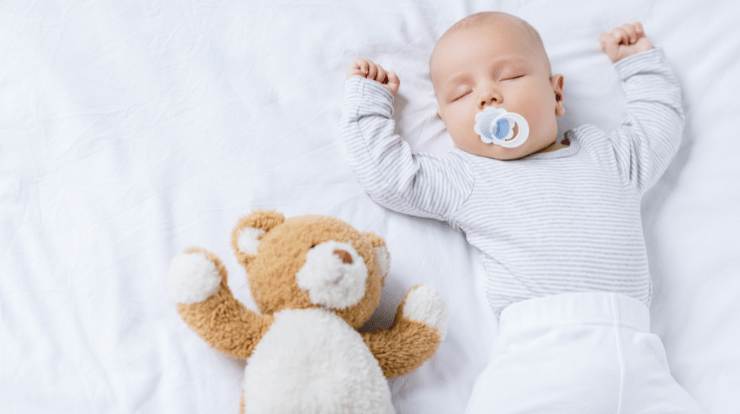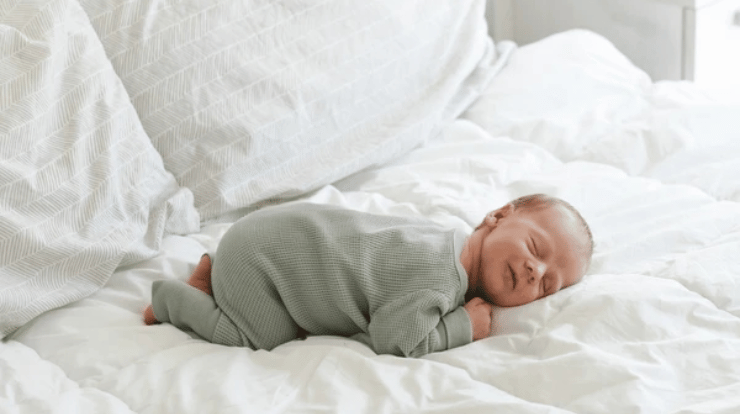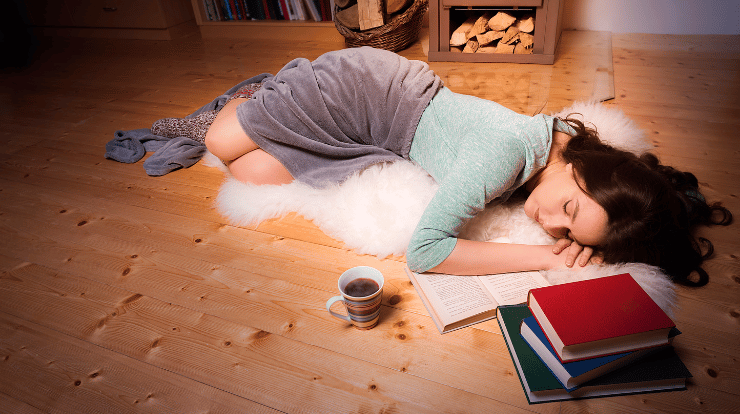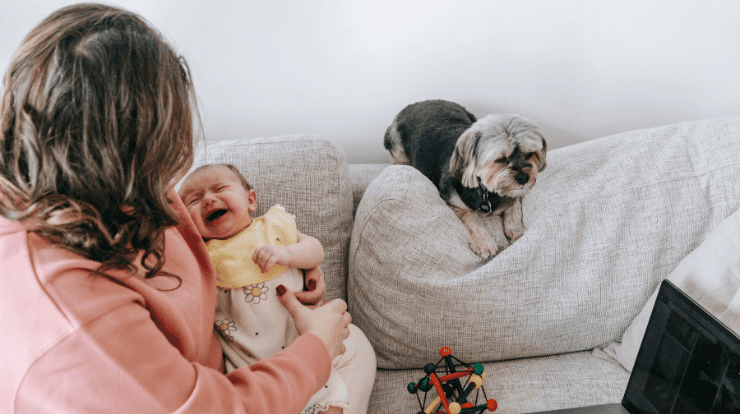
Many people ask, “Can a Newborn Sleep With a Pacifier?” Newborns often have a strong urge to suck, and a pacifier can be a valuable tool for soothing and calming them. However, many parents wonder whether sleeping with a pacifier is safe for their newborn. While there is no clear consensus on this topic, many experts recommend using a pacifier to help reduce the risk of sudden infant death syndrome (SIDS) during sleep. This article will explore the potential benefits and risks of allowing a newborn to sleep with a pacifier and provide tips for safe pacifier use.
Can a Newborn Sleep With a Pacifier?
Many parents wonder if sleeping with a pacifier is safe for their newborn. The short answer is yes; it is generally safe for a newborn to sleep with a pacifier. The American Academy of Pediatrics (AAP) recommends that parents consider offering a pacifier at naptime and bedtime to help reduce the risk of sudden infant death syndrome (SIDS).
However, some essential factors to consider when using a pacifier with a newborn include when to introduce it, how to use it safely, and when to stop using it. In this guide, we will explore everything you need to know about using a pacifier with your newborn to help you make the best decision for your baby.
When to Introduce a Pacifier?
According to the AAP, parents should wait until breastfeeding is well-established before introducing a pacifier, usually around three to four weeks of age. This is because pacifiers can interfere with breastfeeding if introduced too early. When a baby is nursing, they need to use the same mouth and tongue muscles for sucking on a pacifier. Introducing a pacifier too early can lead to confusion and make it more difficult for a baby to latch on and breastfeed effectively.
How to Use a Pacifier Safely?
When using a pacifier with your newborn, following some basic safety guidelines to reduce the risk of choking, strangulation and other hazards is essential. Here are some tips for using a pacifier safely with your baby:
- Choose the right type of pacifier: Look for a pacifier specifically designed for newborns, with a small, soft nipple that fits comfortably in your baby’s mouth.
- Use a pacifier that is in good condition: Check the pacifier regularly for signs of wear or damage, such as cracks, holes, or loose parts. Replace any damaged pacifiers immediately.
- Don’t attach a pacifier to a string or cord: This can pose a strangulation hazard if the cord becomes wrapped around your baby’s neck. Instead, look for pacifiers with a built-in handle or loop that makes them easy to remove.
- Don’t use a pacifier as a substitute for food: Pacifiers are meant to soothe babies, not replace feedings. Your baby must eat, not suck on a pacifier if it is hungry.
- Don’t force a pacifier on your baby: Some babies don’t like pacifiers, and that’s okay. If your baby doesn’t want to take a pacifier, don’t force it.
When to Stop Using a Pacifier?
While pacifiers can be helpful for soothing babies and reducing the risk of SIDS, there comes a time when it is appropriate to stop using them. The AAP recommends that parents start weaning their baby off the pacifier between six and twelve months. Prolonged pacifier use can interfere with a child’s dental development, causing problems such as misaligned teeth or a protruding jaw.
It is important to note that some babies may become attached to their pacifiers and have difficulty giving them up. If this is the case, gradually weaning your baby off the pacifier rather than taking it away abruptly is best. Try limiting pacifier use to nap time and bedtime only, and gradually reduce the time your baby uses the pacifier daily.
Conclusion
In conclusion, pacifiers can be a safe and effective way to soothe and comfort your newborn. When appropriately used, pacifiers can also help reduce the risk of SIDS. However, it is essential to wait until breastfeeding is well-established before introducing a pacifier and use them safely to reduce the risk.

Choosing the Right Pacifier
When it comes to pacifiers, there are a variety of types and shapes available on the market. It’s essential to choose the right pacifier for your baby to ensure it is safe and comfortable for them to use. Here are some factors to consider when choosing a pacifier:
Size and Shape:
Pacifiers come in different shapes and sizes to accommodate different age groups. Newborn pacifiers are typically smaller and have a rounder nipples to fit their smaller mouths. As your baby grows, you must switch to a larger pacifier with a broader base and longer nipple.
Material:
Pacifiers can be made of different materials, such as silicone, latex, or rubber. Silicone pacifiers are more durable and easier to clean, while latex pacifiers are softer and more flexible. Rubber pacifiers are similar to latex but can break down faster and may cause allergies.
Ventilation:
Some pacifiers have a built-in ventilation system to prevent skin irritation and help with airflow. This is especially important for babies prone to developing rashes or sensitive skin.
Design:
Pacifiers come in different designs, including orthodontic, cherry-shaped, and flat-nipple pacifiers. Orthodontic pacifiers are designed to promote healthy oral development, cherry-shaped pacifiers are more traditional, and flat-nipple pacifiers mimic the shape of the mother’s nipple.
When introducing a pacifier to your baby, monitoring them closely and ensuring they use it safely is essential. Never attach the pacifier to a string or cord around your baby’s neck, which can pose a choking hazard. It’s also essential to clean the pacifier regularly to prevent the buildup of bacteria and germs.
Should I remove the pacifier when the baby is sleeping?
It is generally recommended that you remove the pacifier from your baby’s mouth after falling asleep. If the pacifier falls out of the baby’s mouth while sleeping, it could pose a choking hazard.
In addition, if your baby becomes dependent on the pacifier to fall asleep, they may wake up frequently throughout the night when the pacifier falls out, which can disrupt their sleep and yours.
However, if your baby is very young and has a strong urge to suck, using a pacifier to soothe them to sleep may be helpful. In this case, you can remove the pacifier once your baby has fallen asleep and monitor them closely to ensure they do not choke.
Ultimately, the decision of whether or not to use a pacifier and when to remove it is a personal one that should be made based on your baby’s individual needs and preferences. It’s always a good idea to consult your pediatrician if you have any concerns or questions about your baby’s sleep habits.







